Perspectives and Questions
Mini-Topics for Today
•
Open-Ended Evolution
•
The Question of Scales
•
Perspectives and Questions
•
What was the goal of CAs, in the end?
•
Eigen's Paradox: how could self-replicators emerge
The Question of Scales
•
What do we want to describe at what scale?
•
Kinematic Cellular Automata
•
Information layer to go to the next scale
Information Layer Question
•
The macro-organism is not very localized on its base substrate, though it definitely leverages various parts of it at different degrees
•
There is no particular conservation law requirement that the physical layer needs to satisfy (i.e. we should not be modeling the whole world, just e.g. the bits in a computer, and there are no conservation laws for the bits in a computer -- abstracting error correction)
Open-Ended Evolution
Many view this as the ultimate goal of Alife
What is the question of open-ended evolution?
To create a synthetic universe that yields a continual production of either novel or adaptive forms
Tierra
Avida
What was the goal of CAs, in the end?
To present a setting where, under reasonable conditions, the problem of self-replication can be solved (as opposed to be assumed to have been solved)
What was the truly useful simplification?
In my opinion, it was something that was not really explicitly written: to focus on a closed informational system, and to solve within it the problem of self-replication
Did we solve the problem of self-replication?
In some sense, the problem of self-replication in a cellular automaton is not applicable to the real world, but only for a subtle reason that in fact can be fixed (let's discuss this later)
What is the idea?
The idea of open-endedness is not to fix any selection goal, just let the system evolve, and see that the implicit selection based on reproduction (within fixed resources)
BFF Computational Life
•
Is a blockchain (like Bitcoin) an alife form?
•
Creating an artificial chemistry allowing for computers to emerge is an exciting medium-term challenge, with realistic intermediate results
Some promising works were done, bypassing the challenges of computation, in a field that we could call 'open-ended genetic algorithms'
About Genetic Algorithms
The idea was initially to evolve program codes via reproduction, random mutations, and cross-breeding, and to select them for some fitness function
The goal was to see interesting, creative solutions found by this kind of methods (which we can view as an optimization method)
An idea for a small project: this kind of things (making LLMs generate code instead of mutations and copies) could probably be done by LLMs much faster now
Most emblematic genetic algorithms of that era: Karl Sims creatures
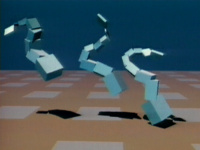
Open-Ended Genetic Evolution
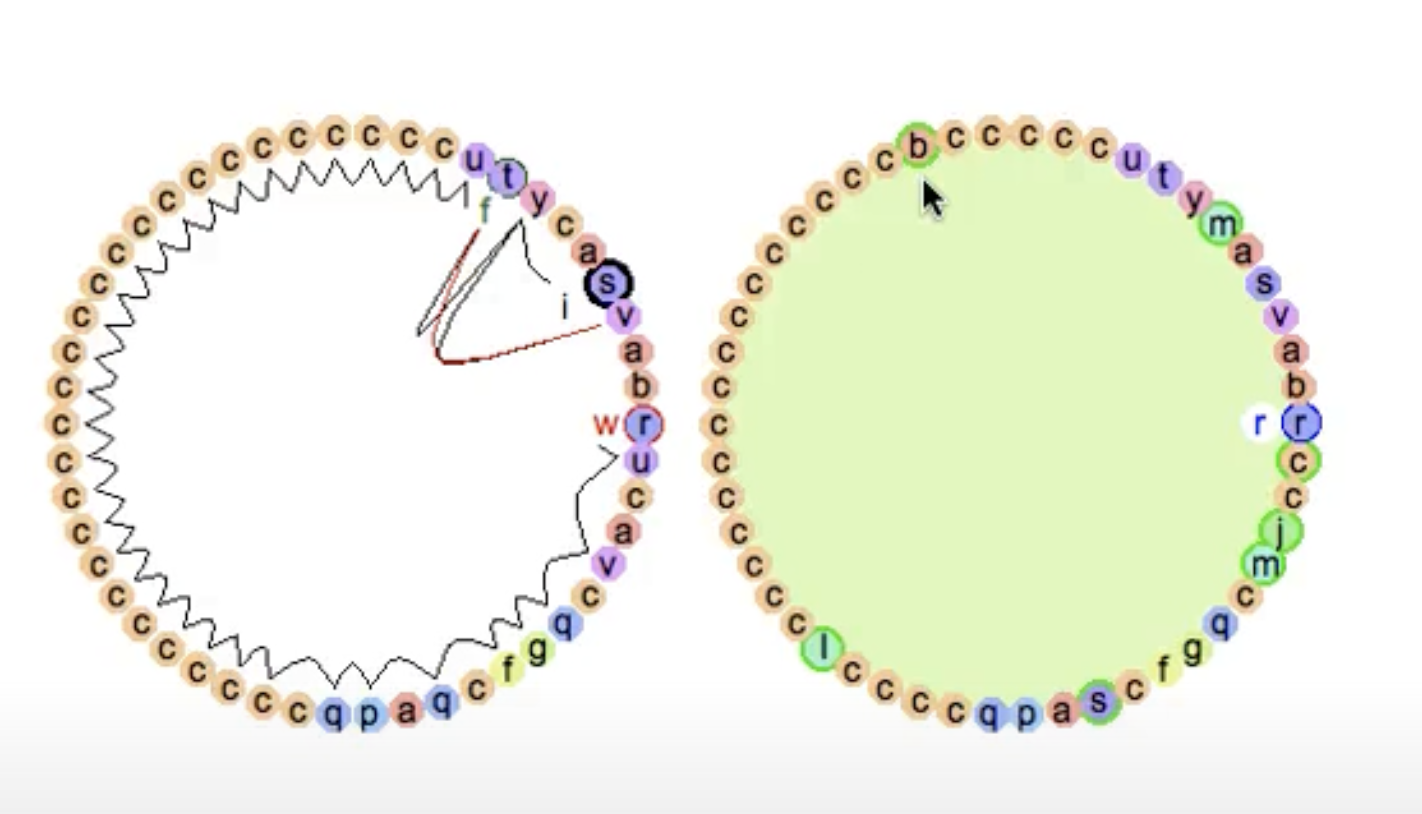
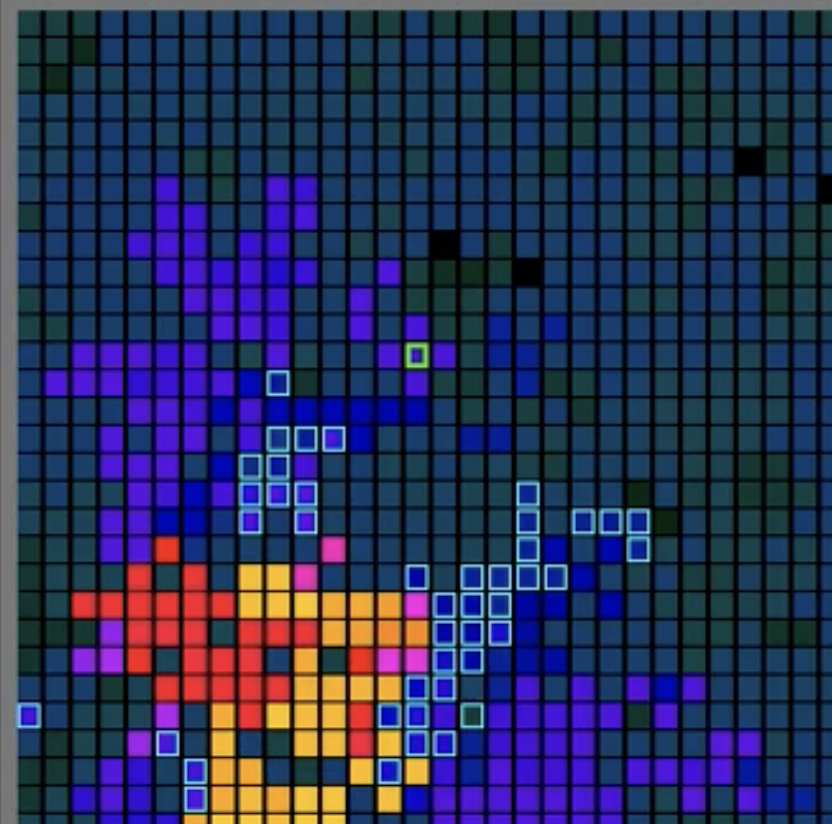

A paper of Rokhsar, Anderson, Stein
It is still an open problem to even recognize if we see open-ended evolution or not
Paper of Aguera-y-Arcas, Alakijala, Evans, Laurie, Mordvintsev, Niklasson, Randazzo, Versari
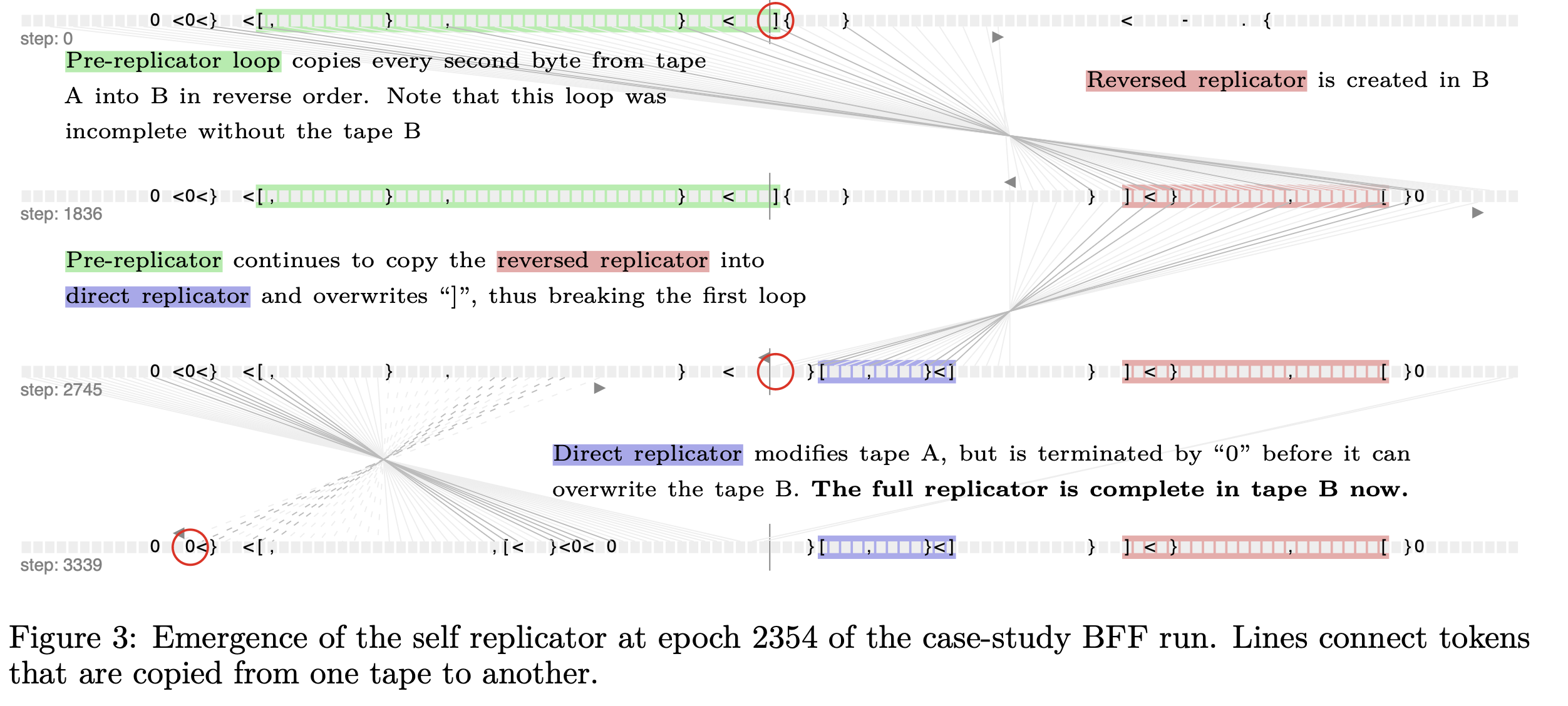
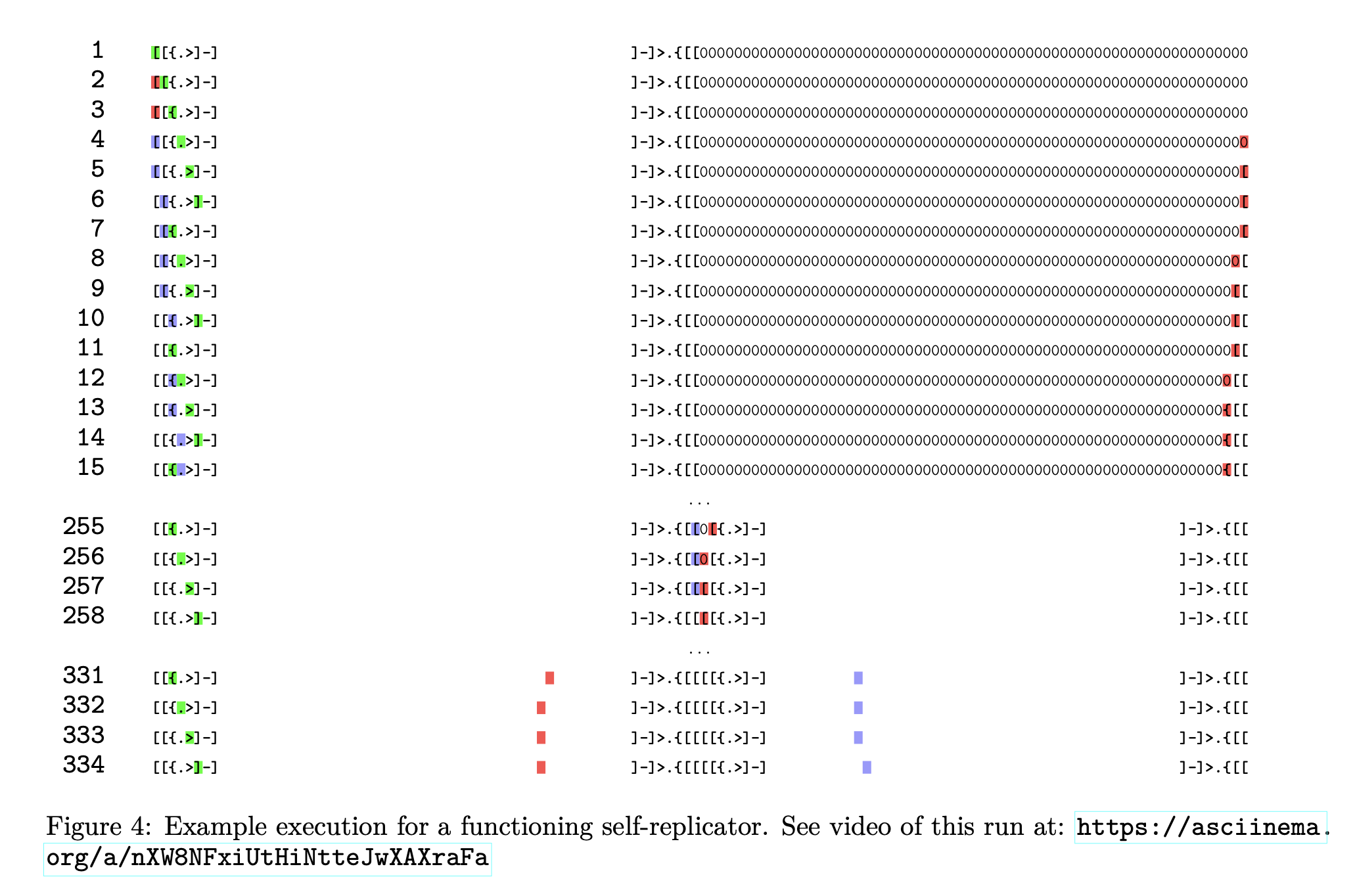
Information Layer Vision
For small entities at a scale to yield a big entity at the higher scale, we find some information degrees of freedom in the small entities that can be combined to perform some computation that allow to manage their aggregate
The cellular automaton is an abstraction of that information layer, where we also strip away in some sense the interaction with the lower scale
It is a bit like the Turing machine, which is a stylized view of a computer, which strips away the input and output of the computer
So, what the Von Neumann's construction shows is that from the Kleene fixed point theorem, we can solve the self-replication mechanism internally, but that's not really taking into account the external world
It's like saying we can copy a file from a computer to another; it doesn't mean that we can copy the whole computer
However, if we think with the wrap logic, the logic to do replication can also be embedded in it, so the Kleene fixed point argument in fact also works for the more general problem
•
If we look at ants, there are the cell level, the ant level, and the ant colony level
•
Link of open-ended evolution with intelligence?
Some questions I find particularly interesting:
•
Turing machines in continuous media, like Lenia
•
What do we learn from Lenia and KdV, etc.?
Unifying the Kinematic and the Cellular Views
At the beginning, Von Neumann proposed two views of self-replication: the kinematic view (machine picking up pieces to make a copy of itself), and the cellular automaton view
It feels like time to reconcile these two views
The 'space' is the memory of a computer, which is divided among programs that are written in a very simple assembly
Each program is run for one step, and then leaves the hand to the next program
Key: some instructions that allow to affect memory of other programs and to make copies
.